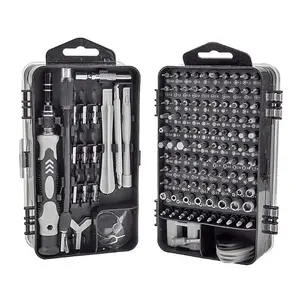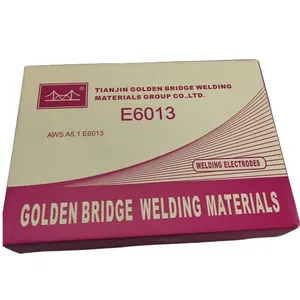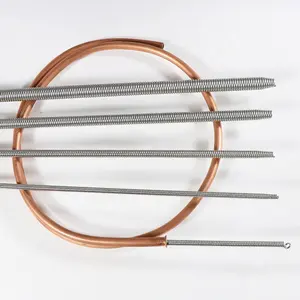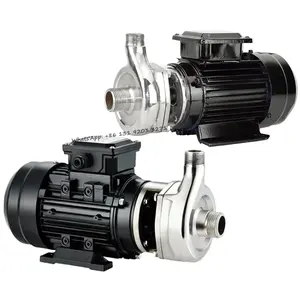Popular in your industry
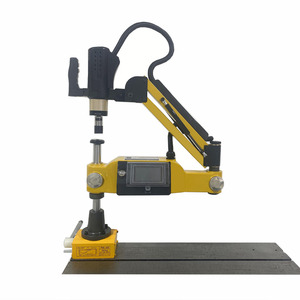


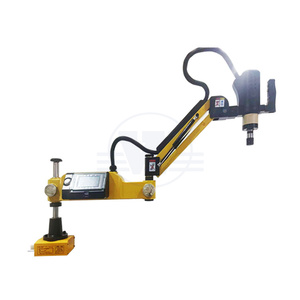
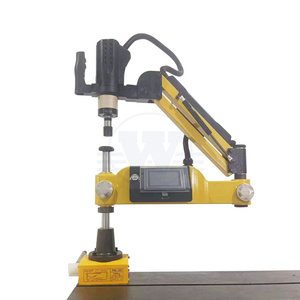
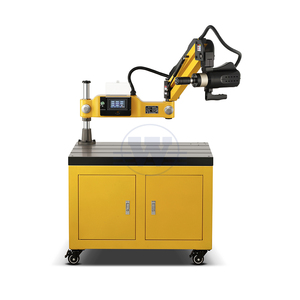















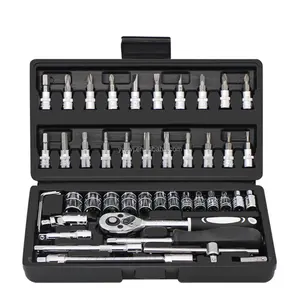





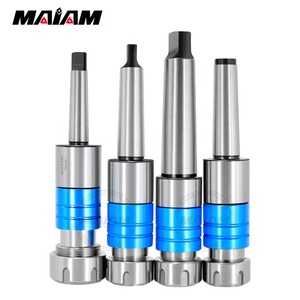



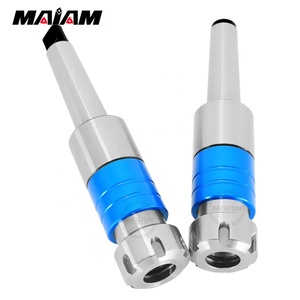
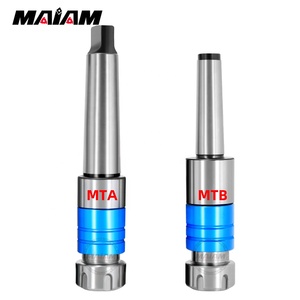




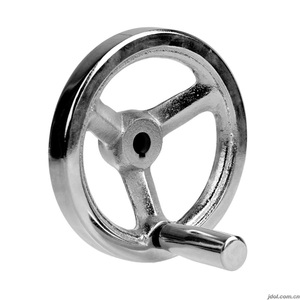
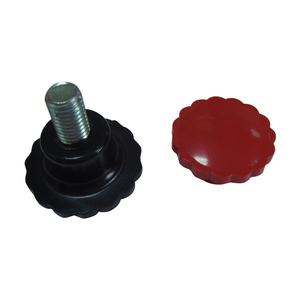






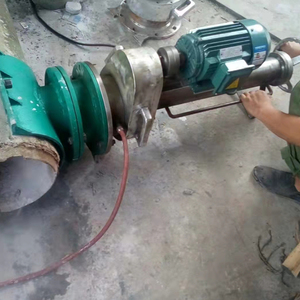















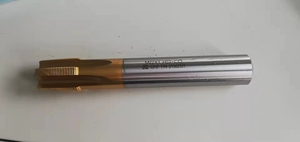

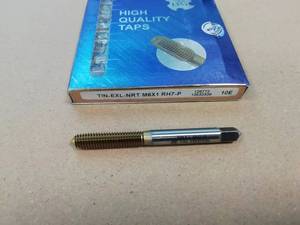





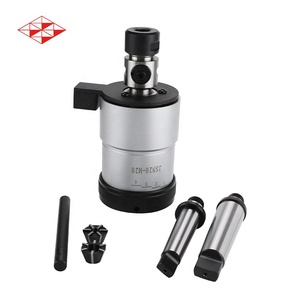
Top categories
About tapping tools
Tapping tools are indispensable in the machining and manufacturing sectors, crafted to generate precise threads in drilled holes. These instruments enable the creation of screw threads, enhancing the assembly process with precision and efficiency. Tapping tools see widespread use in diverse settings, from machinery repair shops to manufacturing facilities and construction sites, underscoring their critical role in contemporary industrial activities.
Types and Composition of Tapping Tools
The assortment of tapping tools includes a variety of items such as tap and die sets, tap and die kits, and hand taps. Each is engineered for particular threading needs, whether for hand-guided or machine-driven applications. Constructed from materials like alloy steel, high-speed steel (HSS), and carbon steel, these tools are chosen for their longevity and cutting capabilities. For example, the metric tap and die set is an extensive kit featuring taps and dies in multiple metric sizes, suitable for a wide array of threading jobs. The tap and die pair is often accompanied by a tap wrench or tap spanner, providing the leverage needed for hand threading. In automated settings, a tapping machine may employ a drill tap or thread chaser, integral to CNC operations for mass production. A tap set might also include various tap styles such as straight flute, spiral point, and spiral flute, each tailored for particular threading tasks and material types.
Structure and Features of Tapping Tools
The architecture of tapping tools like the thread tap and drill tap is intricately designed for exactitude. A standard tap set comprises a taper tap, an intermediate tap, and a bottoming tap, each fulfilling a specific role in thread crafting. The taper tap initiates the thread, the intermediate tap extends it further into the hole, and the bottoming tap completes the thread to the hole's base. The tap wrench and tap spanner are fashioned to offer a firm hold and leverage, easing the manual tapping process. For machine-aided tapping, the tap spindle is essential, securing the tap and ensuring its precise alignment with the hole. Advanced attributes like TiN or TiAlN coatings are applied to boost the tool's longevity and performance. These coatings also mitigate friction and thermal accumulation, vital for preserving the tap's integrity and the integrity of the threads it forms.
Materials and Properties of Tapping Tools
The selection of materials for tapping tools is based on their robustness, endurance, and wear resistance. High-speed steel (HSS) is favored for its ability to retain hardness at elevated temperatures. Alloy steel, known for its resilience, is typically used in tools like the thread die and hand tap, which demand resistance to impact. Carbon steel offers a cost-effective solution for less intensive tasks, and with TiN coatings, its surface hardness and service life are substantially improved. Stainless steel, chosen for its anti-corrosive properties, is ideal for tools exposed to damp or corrosive conditions. The material choice is pivotal to the tool's efficacy and is a crucial factor for users needing dependable and precise threading.
Business Usages and Applications
Tapping tools are vital for operations such as thread tapping and cutting, prevalent in CNC machining, milling, and metal drilling processes. The tapping machine, outfitted with a tap spindle, streamlines the procedure, enhancing productivity in manufacturing settings. These tools are also adaptable for a variety of materials, from stainless steel to aluminum alloy and plastic, demonstrating their versatility for different industrial demands. In the automotive sector, tapping tools are instrumental in threading engine parts and body panels. In construction, they secure the fastening of structural components. The precision and dependability of these tools are essential to the efficiency and safety of these critical sectors.
Functions and Capabilities of Tapping Tools
The principal role of tapping tools is to forge internal threads with consistency and accuracy. This is accomplished through the tap's design, which includes cutting edges that remove material to shape the thread. The tap's flutes facilitate chip evacuation, safeguarding the newly minted threads and the tap itself. Beyond thread creation, certain tapping tools, like the thread chaser, are purposed for thread restoration, cleaning and reviving compromised threads without cutting anew.
Distinctive Features and Unique Selling Points
Key attributes and capabilities of tapping tools encompass specialized designs for distinct threading operations. For example, a drill and tap instrument merges drilling and tapping into a single action, conserving time and ensuring alignment. Features such as a spiral point in a thread tap drive chips forward, optimizing it for through-hole tapping. The unique selling propositions of these tools often center on their efficiency, precision, and their potential to curtail labor and machining duration.
Benefits and Improvements Offered
Employing premium tapping tools yields numerous advantages, including heightened precision, diminished production times, and a reduction in errors and subsequent rework. These instruments are tailored to satisfy the exacting standards of modern manufacturing, guaranteeing that threaded components mesh flawlessly, upholding the integrity of the end product. The appropriate tap and die set can markedly refine the threading process, resulting in more robust, dependable final products.
How do tapping tools enhance manufacturing precision?
Tapping tools bolster manufacturing precision by ensuring clean, accurate threads for secure fastening, a critical aspect in industries where tolerances are tight. The exactness of a thread chaser or a drill and tap guarantees seamless component integration, preserving the final product's integrity. The uniformity of threads produced by these tools is crucial for the assembled parts' functionality, particularly in sectors where precision is imperative, such as in aerospace and medical device production.
What should be considered when choosing the right tapping tool?
In choosing the optimal tapping tool, considerations include the material to be threaded, the desired thread type, and the precision level of the application. A metric tap and die set would be apt for projects necessitating metric measurements, while a tap & die set metric with specialized coatings might be preferred for more challenging materials. The decision between manual tools like a hand tap and automated solutions such as a tapping machine hinges on the operation's scale and the workload volume.
How to ensure the longevity of tapping tools?
To prolong the life of tapping tools, correct usage, routine upkeep, and proper storage are essential. Selecting the appropriate tap die for the material and employing suitable cutting fluids can stave off early wear. Periodic inspections for wear and damage, along with the prompt replacement of defective parts, such as a tapping machine's bearings or gears, are crucial. Storing tools in a moisture-free, clean setting and utilizing protective coatings like zinc or chrome can further extend their durability.
Explore an extensive array of tapping tools on Alibaba.com, tailored to meet the varied requirements of modern industries. From manual tap sets to advanced tapping machines, the platform offers a plethora of choices to enhance your threading operations.


